What Is Camera Iso Stand For
The International Organization for Standardization
The acronym ISO itself is a reference to the International Organization for Standardization. Nevertheless this organization does far more than ascertain camera sensitivities, it promotes universal standards for measurements of all different types, on an international level.
Fun fact: Instead of calling themselves the IOS, the title "ISO" is in reference to isos, (ίσος) which means "equal".
Previously, film sensitivity was also measured a similar way by another organization, the ASA or American Standards Association. This has been superseded by ISO in modern times, but the measurement itself and the scale remain effectively the same.
Picture show ISO vs. Digital ISO
For film photography, ISO or ASA (American Standards Associations) speed refers to the motion picture speed of the film whorl. Typically, when you are shooting outdoors on a sunny day, yous will be using an ISO100 or ISO200 film. If you're shooting indoors, you would probably switch to an ISO800 pic or faster. What'due south hard, of class, is if you lot have to go from an outdoor to indoor location chop-chop, because that commonly means that you would either have to change the roll of flick or compensate with your discontinuity or shutter speed.

Corking affair well-nigh digital photography is that yous can change your ISO speed on the fly, making information technology like shooting fish in a barrel to transition between outside and interior shots. On height of that, you can actually view on the LCD screen how your prototype looks in that item ISO.
How ISO Affects Image Quality and Noise
In both film and digital photography, the higher the ISO, the more grain you'll have in the image. In digital photography, racket is the by-product of the increased electric charge needed to make the sensor more than sensitive to light and looks like speckles on the prototype. The event of more racket, however, is a rougher-looking image and a decrease in image quality.
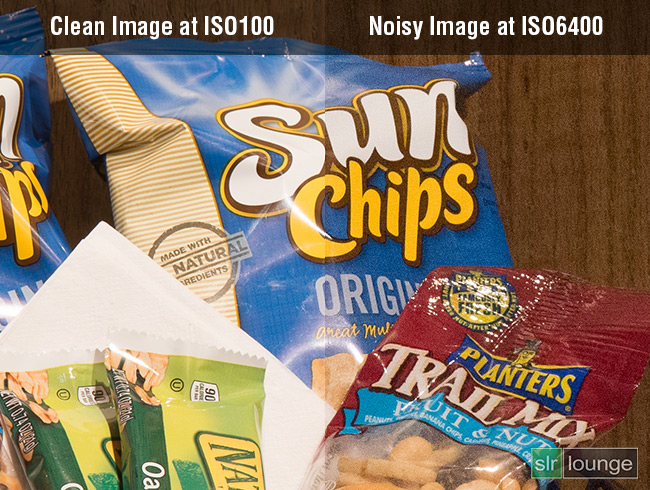
Luminance Dissonance vs Blush Noise
There are ii types of racket, luminance noise, and chroma noise. Luminance noise retains much of the original color because this type of noise but affects the effulgence of the pixels. Blush noise, on the other hand, looks like colored speckles or grain, and is largely unattractive. This is considering the noise is affecting the color of the pixels rather than just the brightness of the pixels. Luckily, post-processing software like Lightroom does a adept job in minimizing chroma noise.

Different cameras take different thresholds on when this racket starts to degrade the image quality. This is known every bit the signal-to-noise ratio. At that place are several factors that decide bespeak-to-noise ratio. Aside from the processor of the camera, the megapixel count and the size of the sensor play a office in how well a photographic camera tin can minimize dissonance.
How a Camera'southward Megapixels and Sensor Size Affects ISO
The size of the sensor and the amount of pixels on that sensor straight affects the potential corporeality of noise that can occur when you lot are shooting at higher ISOs. Imagine that a sensor is like a swimming pool and the pixels are the amount of beach balls that can float in that pool. If you simply accept 100 balls, you tin can fit larger size balls in the puddle. If you want to fit 1,000 balls, you would either have to have a larger swimming pool or use smaller balls. That is substantially the same relationship with pixel count and sensor size.
A sensor is fabricated up of millions of tiny light-gathering receptors called pixels. One megapixel (MP) consists of one meg pixels. If you have two same size sensors and 1 has 12MP and the other has 24MP, the 12MP sensor can have larger pixels than the 24MP sensor. The larger the pixel size, the meliorate that pixel is in gathering light, merely like the larger the beach ball, the more than air it can hold. If yous want to increase the number of pixels from 12MP to 24MP without decreasing the pixel size, then you would have to increment the physical sensor size. This is like having a larger pond pool to hold more beach balls without decreasing the size of the balls. The size of the pixel in relation to the sensor size is known every bit the pixel pitch and is measured in microns.
Then as you increment your ISO, you will start to get racket at a lower ISOs with a meaty photographic camera than with a larger sensor DSLR. A compact photographic camera paradigm can look noisy at ISO800, whereas a full-frame DSLR prototype can have little to no dissonance all the way upwards to ISO3200.
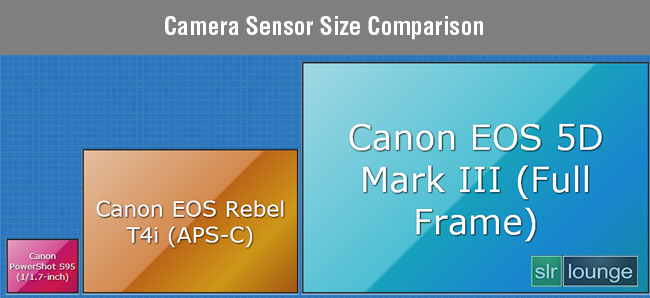
Recommended ISO for Different Scenarios
Here are some recommendations of what ISO to use in unlike lighting weather condition.
• Outdoors with sunny skies: ISO 100-200
• Outdoors with clouded, sunrise and sunset: ISO 200-400
• Well lit interior: ISO 400-800
• Semi-lit interior: ISO 800-1600
• Nightime exterior or dimly lit interior: ISO 1600-6400
• Indoor or night sports: ISO 1600-8000
The other factors that will determine which ISO to use is what shutter speed and aperture combination that you want to use. If you lot are shooting fast moving subjects that require a fast shutter speed of 1/500th sec or faster, you accept to recoup for exposure past either opening up your aperture or increasing your ISO. Using a lens that is "fast" or has a big maximum discontinuity like f/ane.8 allows y'all to shoot in a lower ISO equally opposed to if yous are using a lens with a maximum aperture of f/2.8.
Sometimes, you lot take no pick merely to increase the ISO. This is particularly truthful for shooting events like a nuptials reception where yous desire to have a fast plenty shutter speed to make sure your subjects are not blurry.
Additionally, if you lot want to utilize a smaller aperture, like f/sixteen, to increase the depth of field for mural photography, you too take to compensate for exposure past either using a slower shutter speed or increasing your ISO.
Now, if y'all identify your camera on a tripod and you're shooting landscape or the city skyline, then you tin can shoot during the twenty-four hours or dark without having to change your ISO. All you take to do is dull downwardly your shutter speed until you have the correct exposure.
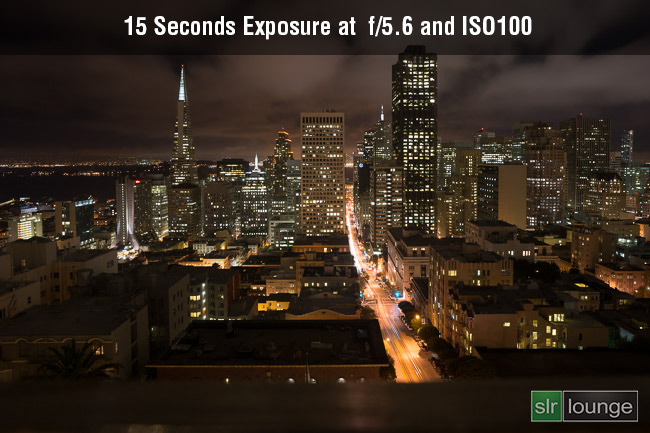
How Exactly Is ISO Measured?
The way ISO is measured, past the International Organization for Standardization itself, (ISO 12232:2006) is simply a specific level of brightness or exposure.
This brightness level is, visually, eighteen% grey. Does this hateful that ISO 100, 200, 400, and others all corresponds to fixed brightness levels, such as lumens or EV? Unfortunately the answer is NO, in the real world. In every manner that ISO is referenced on charts and graphs, information technology is simply used as a respective effulgence based on your shutter speed and aperture.
For example: ISO 100, ane second, and f/1.0 stand for to the stock-still brightness "EV 0". However, that same brightness level could as well exist achieved at ISO 200, i/2 second, and f/i.0, or ISO 400, 1/4 second, and f/ane.0. Or y'all could change both your aperture and your shutter speed at the same time, and use any ISO setting you lot desire, yet still be able to get in at the same final EV brightness of xviii% grey.
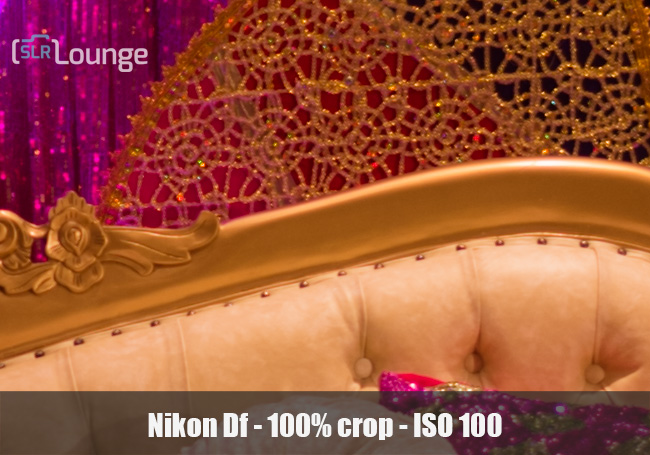
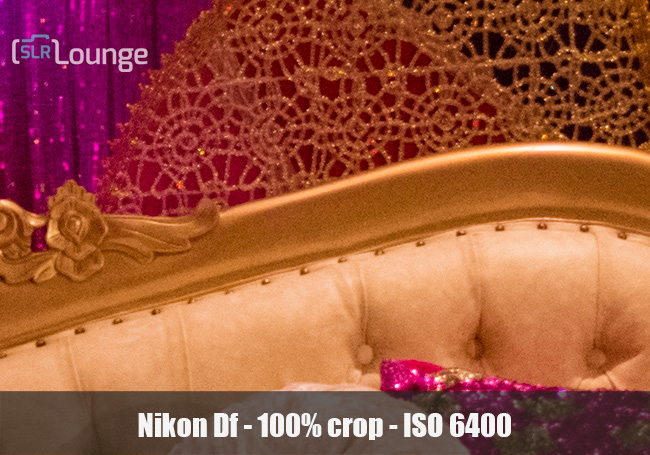
Common Misconceptions and FAQs almost ISO
Are college digital ISOs really more sensitive?
One common mistake that photographers make is how they depict the style ISO works on digital cameras. For example, when the ISO is raised from 100 to 200, that sensor is not actually becoming more sensitive to lite. In other words, it is not actually collecting more photons than it was before. The sensor is collecting photons the same way, however information technology is amplifying the point that these photons are creating on the sensor. This does not mean that shooting at college ISOs is pointless, of course, for numerous reasons. For more than information, see the Loftier ISO Definition.
Actual ISO versus stated ISO
In theory, on all camera sensors, as well equally all films, ISO settings should be exactly the same. Each camera that uses ISO 100, for case, should receive exactly the same effulgence of exposure. (Assuming identical shutter speeds and apertures.)
Unfortunately, not all camera sensors achieve such precision, and some digital cameras are actually slightly more sensitive or less sensitive to calorie-free. In other words, ISO 400 may actually bear like ISO 300 on a certain photographic camera, for instance. Generally speaking these discrepancies are no larger than one/iii or ane/5 of a end or EV, even so.
Conclusion
And then to epitomize, the ISO rating refers to the calorie-free sensitivity rating of a sensor. The rule of thumb is to shoot at the lowest ISO possible given the lighting condition and shutter speed/aperture combination that you are using. The college the ISO, the more dissonance creeps into your images, and so if you can get away with using a lower ISO, then practice so.
Sensor size and megapixel count besides affects how soon dissonance will start to creep into an paradigm equally yous increase the ISO. A 12MP compact-camera sensor will be a lot noisier at ISO1000 than a 24MP total-frame sensor. Typically, a higher-end camera does a better job in controlling noise at the higher ISO range than a lower-end photographic camera.
Finally, information technology'southward of import that, although you lot may have to use a college ISO to become a shot in low-low-cal, it is better to utilise that higher ISO and accept more noise than to not become the shot at all or to have too much motion blur from too slow of a shutter speed.
Practise | Agreement ISO

Take an image at your camera's lowest ISO and some other image with the same composition at your photographic camera'southward highest ISO, irresolute but the shutter speed to keep the exposures the exact same.
Notice the departure in image quality between the two images. If you can't see the departure in-camera, import your images to your computer and look at them side-by-side.
Source: https://www.slrlounge.com/glossary/iso-definition-photography/
Posted by: garciagratin.blogspot.com


0 Response to "What Is Camera Iso Stand For"
Post a Comment